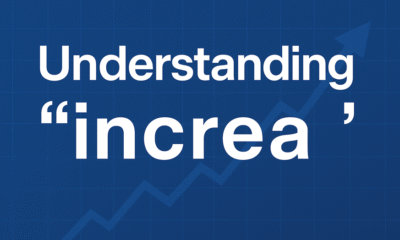Art & Architecture Info
The Fascinating World of Ancient Artz: A Journey Through Time
Published
4 months agoon
By
Admin
Art is one of the oldest and most powerful ways humans have expressed themselves. Long before books, cameras, or digital media, our ancestors used stones, colors, and carvings to tell stories. These works of creativity, known today as Ancient Artz, are not just decorations of the past—they are windows into human history.
When people hear the term Ancient Artz, they often picture towering pyramids, statues of gods, or cave walls painted with animals. But it’s more than that. Ancient art was deeply tied to survival, faith, power, and culture. It reveals how people lived, what they worshipped, and the values they passed on to future generations.
Let’s take a journey through time to explore the world of Ancient Artz—its meaning, symbolism, masterpieces, and its lasting influence on the modern world.
What Is Ancient Artz?
The term Ancient Artz refers to the earliest forms of art created thousands of years ago across different civilizations. From prehistoric cave paintings in France to the Pyramids of Egypt and the Terracotta Army in China, these works highlight the human desire to create, communicate, and connect.
Unlike most modern art, which often focuses on self-expression, Ancient Artz served practical and spiritual purposes. It was used to honor gods, guide souls to the afterlife, record events, and teach stories. In fact, before the invention of writing, art was the main language humans used to share ideas across generations.
The First Expressions: Cave Paintings and Rock Carvings
Imagine stepping into a dark cave lit only by firelight, where the walls are covered with paintings of bison, horses, and deer. This is exactly what archaeologists found in the caves of Lascaux, France, dating back more than 40,000 years.
These early cave paintings are some of the oldest examples of Ancient Artz. They weren’t just for decoration. Many experts believe they were part of rituals to ensure good hunting or to connect with spiritual forces.
Similarly, rock carvings and petroglyphs found in regions like Africa and Australia show that humans everywhere were using symbols and drawings as a way to communicate beyond words. These early artworks remind us that creativity was essential for survival and culture, even in the harshest conditions.
Artistic Brilliance of Ancient Civilizations
As human societies grew, their art became more complex, structured, and symbolic. Each ancient civilization developed unique artistic traditions that still inspire us today.
Ancient Egypt
No discussion of Ancient Artz is complete without Egypt. Egyptians created pyramids, the Sphinx, temples, and tomb paintings that are admired even today. These works were not only engineering marvels but also spiritual monuments meant to guide pharaohs into the afterlife. Hieroglyphs carved on temple walls served as both language and art, recording stories that would outlast generations.
Mesopotamia
Known as the “cradle of civilization,” Mesopotamia produced massive stone carvings and reliefs. The Code of Hammurabi, one of the earliest written law codes, was carved into stone with artistic detail. Here, art was used not just for beauty but also to govern society and communicate authority.
Greece and Rome
The Greeks and Romans took Ancient Artz to new heights by focusing on the human body, proportion, and beauty.
- Greek artists sculpted lifelike statues like the Venus de Milo and painted pottery to tell myths of gods and heroes.
- Romans blended Greek traditions with their own, creating busts of emperors, murals, and massive amphitheaters that symbolized power and progress.
India and China
In Asia, Ancient Artz reflected deep spiritual traditions.
- In India, temples were covered with sculptures of gods and goddesses that told religious stories.
- In China, delicate jade carvings, bronze vessels, and the Terracotta Army showed both craftsmanship and cultural beliefs about immortality.
Each of these civilizations used art not just as decoration, but as a living language of identity, belief, and authority.
The Symbolism Behind Ancient Artz
What makes Ancient Artz fascinating is the deep symbolism hidden within every piece. Unlike many modern artworks, which can be abstract or open to interpretation, ancient art almost always had a specific purpose or message.
- The Egyptian pyramids were designed to symbolize eternity and guide rulers to the afterlife.
- A Greek vase could tell a myth about Hercules, serving as both a functional object and a storytelling tool.
- Roman statues weren’t only lifelike portraits—they were symbols of political power and divine right.
- In India, temple carvings were visual scriptures, teaching people about gods, virtues, and the cycle of life.
In other words, ancient art wasn’t just “art.” It was a spiritual and cultural language, carrying messages from one generation to another.
Preserving the Legacy of Ancient Artz
Time, weather, and war have destroyed many treasures of the ancient world. But thanks to archaeology and restoration, many masterpieces survive.
Today, museums around the world protect and display these works. The Louvre in Paris, The British Museum in London, and The Met in New York all house vast collections of ancient artifacts.
But preservation is not only about saving objects. It’s about keeping history alive. Each sculpture, vase, or carving tells a story about human struggles, victories, and dreams. By protecting them, we protect the memory of humanity itself.
Ancient Artz and Modern Influence
The legacy of Ancient Artz lives on in countless ways.
- Renaissance artists like Michelangelo and Leonardo da Vinci studied Greek and Roman art to perfect their craft.
- Modern architecture borrows heavily from ancient designs—columns, domes, and arches are still used in buildings like the U.S. Capitol.
- Contemporary artists continue to reinterpret ancient symbols, myths, and techniques in films, paintings, and digital art.
Even today, when you see a government building with grand pillars or a sculpture in a public square, you are witnessing the influence of ancient creativity.
Why Ancient Artz Still Matters Today
So, why does Ancient Artz matter in the modern world? The answer is simple: it connects us to our roots.
It shows us that creativity is not new—it has always been part of what makes us human. Ancient art reminds us of our shared history, our need to tell stories, and our search for meaning beyond survival.
The next time you stand before an ancient statue or see a picture of cave art, pause for a moment. Think about the people who created it—their hands shaping clay, carving stone, or painting walls by firelight. They lived thousands of years ago, yet through art, they are still speaking to us today.
Final Thoughts
The world of Ancient Artz is more than a collection of old objects—it is a living story of humanity. From the caves of Lascaux to the pyramids of Egypt and the temples of India, these works of art are proof that creativity has always guided human life.
They remind us that no matter how much time passes, art is eternal. It carries the voices of those who came before us and continues to inspire those who will come after us.
Also Read:The Gugg: Where Architecture Meets Art in the Heart of New York
You may like
OTHER POSTS


Gabriel Macht Net Worth 2025: Career, Earnings, Assets, and Lifestyle
Introduction If you’ve ever watched Suits, you know Harvey Specter — the sharp, confident lawyer who always plays to win....


Comporium Webmail: The Ultimate Guide to Login, Setup, Features, and Troubleshooting (2025 Edition)
In today’s digital world, staying connected through reliable email communication is essential. Whether you’re a professional managing clients or a...


Understanding “i n c r e a ”: Meaning, Data, and Real-World Applications
Introduction The word “i n c r e a” is among the most universally used concepts across disciplines — from...


PLG Supplies: The Ultimate Guide to Pipeline & Gas Industry Essentials
Introduction – The Backbone of Modern Infrastructure Ever wondered what keeps oil, gas, or water flowing through thousands of miles...


Misha Ezratti Net Worth (2025): Inside the Fortune and Legacy Behind GL Homes
Introduction In Florida’s booming real estate market, few names carry as much influence and respect as Misha Ezratti. As the...


Deion Sanders Net Worth 2025: How “Prime Time” Built His $60 Million Fortune
Introduction When you hear the name Deion Sanders, one word comes to mind: Prime Time.From blazing speed on NFL fields...


Dan Newlin Net Worth 2025: Lawyer’s Wealth, Career, and Success Story
Introduction: More Than Just a Number When people search “Dan Newlin Net Worth 2025,” they aren’t only curious about how...


Tommy Mottola Net Worth & Biography: From Bronx Beginnings to Global Business Icon
Introduction When it comes to wealth, influence, and legacy in the entertainment and business world, few names stand out as...


Mike Vitar Biography: From The Sandlot Star to Los Angeles Firefighter
Introduction. Early Life and Background Mike Vitar, born on December 21, 1978, grew up in Los Angeles, California. He comes...


Tech eTrueSports: Redefining the Future of Esports Through Technology
Introduction: The Rise of Tech in Esports The esports industry has exploded in the past decade. According to Newzoo’s 2024...

Gabriel Macht Net Worth 2025: Career, Earnings, Assets, and Lifestyle

Comporium Webmail: The Ultimate Guide to Login, Setup, Features, and Troubleshooting (2025 Edition)

Understanding “i n c r e a ”: Meaning, Data, and Real-World Applications

Crypto30x.com TNT Review: Full Guide, Benefits, Risks & Price Forecast

AnonIB AZN: The Dark Truth Behind Anonymous Image Boards and Why You Should Stay Away

iofbodies.com Applications: Your Body’s Digital Mirror in a Smarter World
Trending

 Crypto & Blockchain Info3 months ago
Crypto & Blockchain Info3 months agoCrypto30x.com TNT Review: Full Guide, Benefits, Risks & Price Forecast

 Tech News5 months ago
Tech News5 months agoAnonIB AZN: The Dark Truth Behind Anonymous Image Boards and Why You Should Stay Away

 Technology Info7 months ago
Technology Info7 months agoiofbodies.com Applications: Your Body’s Digital Mirror in a Smarter World

 ARTIFICIAL INTELLIGENCE INFO7 months ago
ARTIFICIAL INTELLIGENCE INFO7 months agoFrosting AI Review: Your 2025 Guide to AI Art Magic






